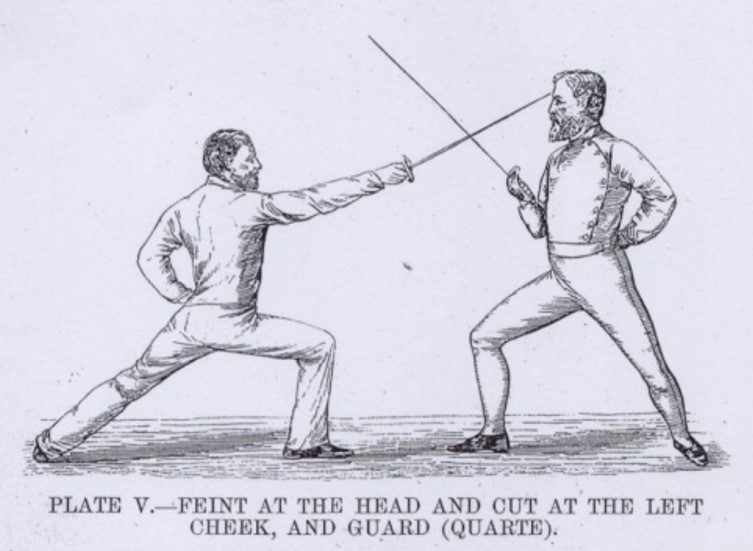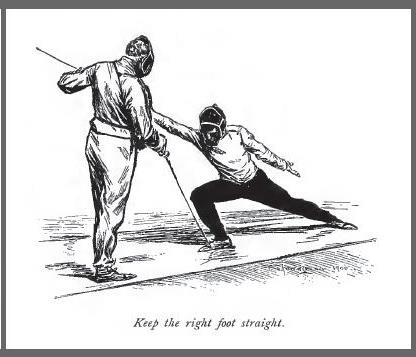Fencing is a sport that requires not only physical agility and strength, but also mental strategy and quick thinking. One of the most important techniques in fencing is the feint, which involves making a deceptive movement to trick your opponent into opening up their defense. Mastering fencing feints can give you a significant advantage in a match, as it allows you to control the pace and flow of the bout. In this blog post, we will delve into the world of fencing feints, from understanding the basics to developing your own style and countering your opponent’s moves.
Understanding the Basics of Fencing Feints
Before we dive into the intricacies of fencing feints, it is important to have a solid understanding of the basics. A feint is essentially a fake attack, meant to deceive your opponent and create an opening for a real attack. It is a tool used to disrupt your opponent’s rhythm and force them to react in a certain way.
There are two types of feints in fencing: simple and compound. A simple feint involves a single movement, such as a fake lunge or a flick of the wrist. On the other hand, a compound feint involves a combination of movements, making it more complex and difficult to read.
The Mechanics of a Fencing Feint
To execute a successful feint, you must have proper body mechanics. This includes having a strong and balanced stance, keeping your arm and weapon in line with your target, and using your entire body to create momentum and power.
One common mistake that fencers make when attempting a feint is overcommitting to the fake attack. This means putting too much force and energy into the feint, which can throw off your balance and leave you vulnerable to a counterattack. Remember, a feint should be subtle and controlled, not a wild and exaggerated movement.
Another important aspect of a fencing feint is timing. You must be able to read your opponent’s movements and anticipate their reactions in order to execute a successful feint. This requires a lot of practice and experience, as well as the ability to think quickly on your feet.
The Role of Mind Games in Fencing Feints
Fencing is often referred to as physical chess, and for good reason. Just like in a game of chess, there is a mental aspect to fencing that can greatly influence the outcome of a match. Fencing feints are a prime example of this, as they involve tricking your opponent and playing mind games.
Feints can be used to create doubt and hesitation in your opponent’s mind, making them more likely to fall for your next attack. They can also be used to draw out a specific reaction from your opponent, which you can then use to your advantage.
Mastering the Art of Fencing Feints

Now that we have covered the basics of fencing feints, let’s delve into how you can master this technique and take your fencing skills to the next level.
The Importance of Proper Footwork in Fencing Feints
Footwork is the foundation of fencing, and it plays a crucial role in executing feints effectively. Your footwork should be light, quick, and precise, allowing you to move in and out of range with ease. This is especially important when it comes to feints, as you need to be able to change direction and adjust your distance from your opponent in a split second.
In addition, proper footwork allows you to maintain balance and control while executing a feint. If your footwork is sloppy or uncoordinated, it will be much more difficult to pull off a convincing fake attack.
Common Mistakes to Avoid When Executing Fencing Feints
As with any skill, there are certain mistakes that fencers tend to make when attempting feints. One of the most common mistakes is telegraphing your feint, which means giving away your intentions through your body language or movements. This can be as simple as tensing up before a feint, or making a sudden and obvious movement.
Another mistake to avoid is being too predictable with your feints. If you always use the same feint in the same situation, your opponent will eventually catch on and be able to counter it effectively. Mix up your feints and vary your timing to keep your opponent guessing.
Developing Your Own Style of Fencing Feints
While there are certain techniques and principles that apply to all fencing feints, it is important to develop your own style and adapt it to your strengths and weaknesses. Some fencers may prefer quick and subtle feints, while others may opt for more dramatic and exaggerated movements. Experiment with different feints and see what works best for you.
It is also important to note that your feints should complement your overall fencing style. For example, if you are a defensive fencer, you may want to use feints to draw out your opponent’s attacks and create openings for counterattacks. On the other hand, if you are an aggressive fencer, you may use feints to set up powerful attacks and overwhelm your opponent.
Fencing Feints: A Strategic Tool for Winning Matches

Feints are not just flashy moves to impress the audience; they are a strategic tool that can help you win matches. Here are some ways you can incorporate fencing feints into your overall strategy:
Disrupting Your Opponent’s Rhythm
One of the main purposes of a fencing feint is to disrupt your opponent’s rhythm and throw them off balance. By using feints strategically, you can force your opponent to constantly adjust their defense and make it difficult for them to find their own rhythm.
Creating Openings for Attacks
Feints can also be used to create openings for real attacks. By tricking your opponent into opening up their defense, you can then follow up with a quick and decisive attack that catches them off guard.
Drawing Out Specific Reactions
As mentioned earlier, feints can be used to draw out specific reactions from your opponent. For example, if you notice that your opponent always parries your attacks in a certain way, you can use a feint to bait them into making that same parry, and then adjust your attack accordingly.
How to Counter Your Opponent’s Fencing Feints

Just as you can use fencing feints to your advantage, your opponent can also use them against you. Here are some tips on how to counter your opponent’s feints:
Stay Calm and Focused
The key to countering your opponent’s feints is to stay calm and focused. Do not let their fake attacks throw you off balance or make you lose your concentration. Keep your eyes on your opponent’s weapon and be ready to react to any sudden movements.
Read Your Opponent’s Body Language
Feints are often accompanied by subtle changes in body language, such as a shift in weight or a slight change in stance. Pay attention to these cues and try to anticipate your opponent’s next move based on their body language.
Use Your Footwork to Create Distance
If your opponent is using feints to get closer to you, use your footwork to create distance and keep them at bay. This will give you more time to react and make it more difficult for them to execute a successful attack.
Training Drills to Improve Your Fencing Feints
As with any skill in fencing, practice makes perfect when it comes to feints. Here are some training drills you can incorporate into your practice sessions to improve your feinting abilities:
Shadow Fencing
Shadow fencing involves practicing your footwork and movements without a partner or opponent. This allows you to focus solely on your technique and body mechanics, which are crucial for executing feints effectively.
Feinting Drills with a Partner
Partner drills are a great way to practice feints in a controlled setting. Start by having your partner make simple attacks, and practice using different feints to counter them. As you become more comfortable, you can increase the complexity of the attacks and feints.
Sparring with Feints
Finally, the best way to improve your fencing feints is to incorporate them into your sparring sessions. This will give you a chance to test out different feints and see how your opponents react to them. It will also help you develop the timing and intuition needed to execute feints successfully in a real match.
The Psychology Behind Fencing Feints
Fencing is not just a physical sport; it also involves a psychological aspect that can greatly influence the outcome of a match. Here are some ways in which fencing feints play into the psychology of the sport:
Creating Doubt and Hesitation
Feints can create doubt and hesitation in your opponent’s mind, making them second-guess their own actions. This can give you an advantage, as it may cause your opponent to hesitate or make mistakes.
Building Confidence and Momentum
On the other hand, successfully executing a feint can boost your confidence and momentum, while also demoralizing your opponent. This can give you a mental edge and make it easier to control the pace of the match.
Mind Games and Strategic Thinking
Fencing feints involve a lot of strategic thinking and mind games. By using feints effectively, you can manipulate your opponent and force them to react in a certain way, giving you the upper hand in the match.
Incorporating Fencing Feints into Your Overall Strategy
As we have discussed, fencing feints are not just a standalone technique; they should be incorporated into your overall fencing strategy. Here are some tips on how to do so:
Know Your Opponent’s Weaknesses
Before a match, take the time to study your opponent and identify their weaknesses. This could be a specific parry or footwork pattern that they struggle with. Use this knowledge to your advantage by incorporating feints that exploit these weaknesses.
Be Adaptable
Every fencer has their own style and strengths. It is important to be adaptable and adjust your feinting techniques based on your opponent’s style. What works against one fencer may not work against another, so be prepared to change up your strategy as needed.
Practice, Practice, Practice
As mentioned earlier, practice is key when it comes to mastering fencing feints. Make sure to incorporate feinting drills into your training sessions and use feints in sparring to get a feel for how they work in a real match.
Conclusion
Fencing feints are a crucial tool in a fencer’s arsenal, and mastering them can give you a significant advantage in a match. By understanding the basics of feints, perfecting your body mechanics, and incorporating feints into your overall strategy, you can become a formidable opponent on the fencing strip. Remember to stay calm and focused, read your opponent’s movements, and always be ready to adapt and adjust your feints as needed. With practice and dedication, you can become a master of fencing feints and take your fencing skills to new heights.